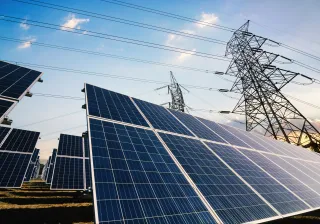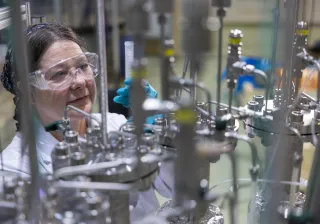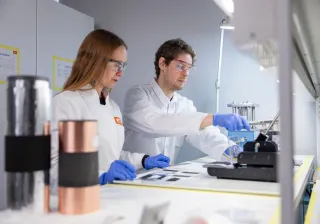The EU energy sector is highly committed to making the move towards smarter, more secure and more sustainable energy system. To facilitate this transition, the sector needs coordinated research efforts and cooperation among EU countries, companies and research institutions.
This interconnected ecosystem works as a value network where no single actor is in charge. Instead, it relies heavily on close cooperation and effective interfaces. In order to thrive and reach the best possible outcomes, the different stakeholders must take into account both scientific information as well as business sentiment.
However, there’s a huge need for industry voices in the mix, especially those of small businesses, outlining their views and opinions. After all, who’d be better at sharing valuable feedback with the European Union than the companies eventually affected by the decisions?
Being present in the networks provides a perfect opportunity for companies to gain visibility, make their voices heard, share their know-how, and possibly shape the future development of the energy sector.
But navigating the European Union’s complex web of bureaucracy isn’t always an easy feat. Luckily, VTT is an expert when it comes to the intricacies of the networks and the structures in play. And while companies have more direct opportunities to influence, VTT acts as a playmaker in the European innovation landscape, building relationships and shaping the views that will eventually lead to initiatives, calls and policies.
The intricacies of the European Union’s energy policy
When it comes to EUs energy politics, there’s no shortage of cooks nor kitchens.
“At the centre of the EU energy innovation policy is the Strategic Energy Technology Plan (SET Plan). It brings together the energy research community, European Technology Platforms, representatives of different ministries as well as the Commission's perspective,” explains Antti Arasto, Vice President, Industrial Energy and Hydrogen at VTT. According to Arasto, the Set Plan serves as a melting pot of different viewpoints, and the contributors are chiefly responsible for determining what lands on the innovation agenda.
In addition to the SET Plan, energy topics are discussed and decisions made in expert panels, industry events and most importantly, over lunch and coffee.
All this eventually adds up to an influx of information and an abundance of stakeholders attempting to influence decisions. “As a result, there’s a real need for impartial expertise and synthesis of information,” Arasto points out.
VTT has a reputation as a neutral party advocating for science-based decision-making
VTT is no stranger to making connections and sharing knowledge. For years, they have worked persistently both in the EU and globally to secure a seat at the table where decisions are made. “We have come to learn that trust develops through persistence in maintaining relationships and being an active contributor,” Arasto says.
In practice that means lots of hours drafting work programmes and agendas, organizing and giving talks at events as well as chatting up a lot of people.
“We put most of our effort in the upstream work: shaping views and defining strategies at an early stage of the process. Our input is valued and welcomed. We are known for always basing our decisions on science and having an in-depth understanding of the innovation needs of the energy sector,” Arasto explains.
“Through our continued work, we have come to be known as an independent and impartial party,” says Kari Mäki, Research Professor, Smart Energy Systems at VTT. “Our neutral, science-based disposition has led us to sit across the table from key contributors of the sector such as the International Energy Agency (IEA) numerous times,” Mäki continues.
Through their networks, VTT is able to share their expertise as well as add real value for their stakeholders. Their unique position allows them to see what is bubbling under the surface in the sector, thus creating new insight into the broad trends as well as changes in policies.
Promoting Finland’s priority areas
With their public mandate, VTT has a great responsibility in considering the wider context of any given decision or initiative and assessing the impact they may have on Finland.
“We look at things from Finland’s perspective, rooting for Team Finland,” says Tuula Mäkinen, Lead, Green Electrification at VTT. “We have specialised knowledge of Finland’s priority areas, and we want to place these insights in the wider discussion happening in Europe. At the end of the day, our aim is to synthesise different goals and to align research priorities,” Mäkinen continues.
Reaching this impactful position doesn’t just happen overnight. It takes years of hard work, building trust, and making valuable contributions. “We are there, putting in the work early, so that Finnish companies don’t have to,” says Arasto.
Having one’s finger on the pulse is essential for keeping up
There’s much to be gained by joining in on the action and adding one’s voice to the conversation. What is more, the European commission can use all the help it can get to grasp what it is that companies need in order to innovate and to create business and welfare.
Additionally, bridging the gap from science to policy happens now faster than ever, making it all the more important to stay in the loop.
Whether it’s connecting with VTT or with a wider network in Brussels, the potential benefits for companies remain the same: a possibility to get their voices heard, enhanced cooperation and eventually, a smarter energy system.







